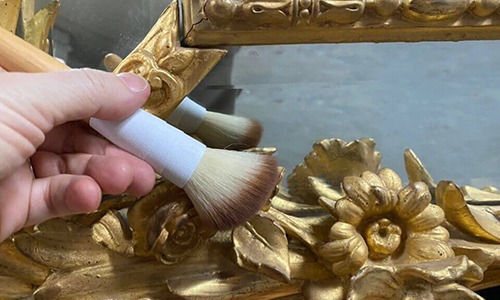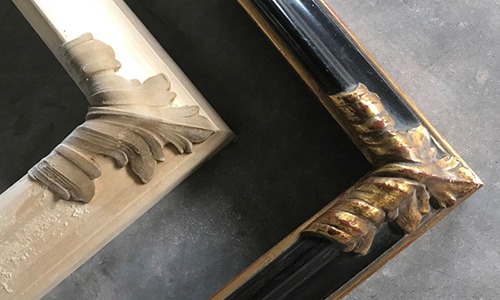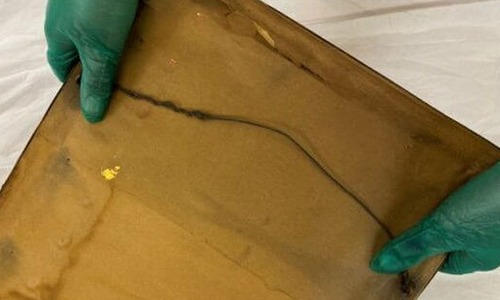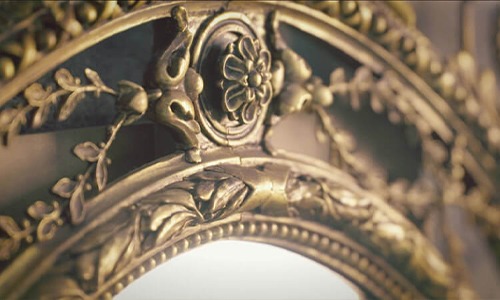The son of a carpenter, French designer Louis Vuitton Malletier started his career as an apprentice at a box-making and packing workshop at the age of thirteen. In 1854, Vuitton started his business from the ground up with his state-of-the-art steamer trunks. The innovative flat profile design made the trunks stackable, while the Trianon canvas exterior reduced the trunk’s weight and made the trunk airtight. These functional elements and style made Vuitton’s trunks stand apart from the traditional rounded top steamer. In 1896, in honor of his late father, Georges Vuitton developed the iconic “LV” monogram which included the quatrefoils and flowers that are still used to this day.
This antique Louis Vuitton trunk arrived at our studio with water damage. Upon arrival, our studio investigated the history of the trunk. Based on the serial number, the interior Vuitton store label, and the woven and stenciled canvas interior, the trunk was likely made between 1896-1914.
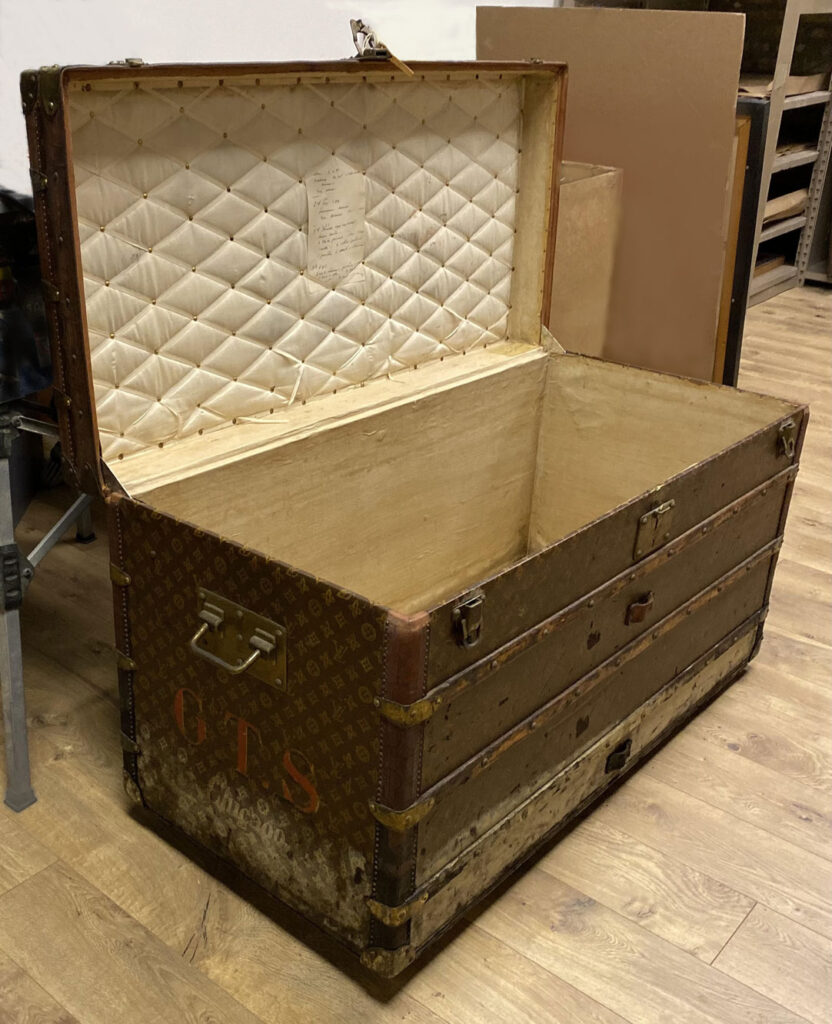
The antique Louis Vuitton trunk prior to treatment.
Louis Vuitton trunks are prized for their quality and attention to detail. All of the hardware, including the interior tacks and buckles, are made of brass. The original locks are prized and considered to be burglar-proof. This trunk still has the two original keys.
The case is constructed with poplar wood. The “LV” monogram design is hand stenciled across the exterior canvas. The quality of the original construction and materials helped facilitate the successful treatment of this trunk.
All of the elements were documented prior to treatment. This ladies’ trunk is a family heirloom, and the small remnants of ribbon, buttons, and antique receipts that were found inside the trunk were catalogued and retained for the family. The 1930s hand-written inventory of the trunk’s past contents was left secured within the tufted lining on the interior of the lid.
The exterior of the case was carefully surface cleaned. Great care was made to preserve the monogrammed canvas exterior. The deformations were relaxed, flattened, and secured to the poplar wood support. The blanched finish was saturated and conditioned, returning the original tonality and sheen.
Once the exterior was stabilized, the original interior lining was cleaned by hand using a variety of wet and dry techniques. The soiled linen straps were carefully unlaced from the lower trays and hand washed. The straps were then air-dried, pressed, and re-laced into the original trays. The original broken silk ribbons within the tufted lid were realigned and mended.
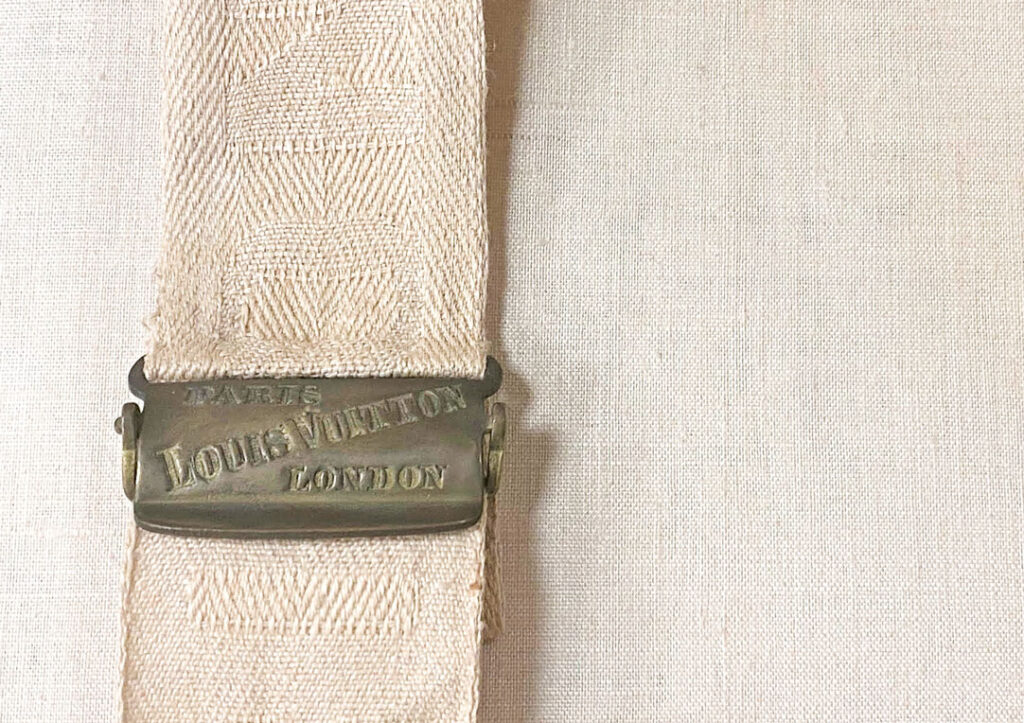
The linen straps were unlaced and cleaned, then reinstalled into the interior trunk trays.
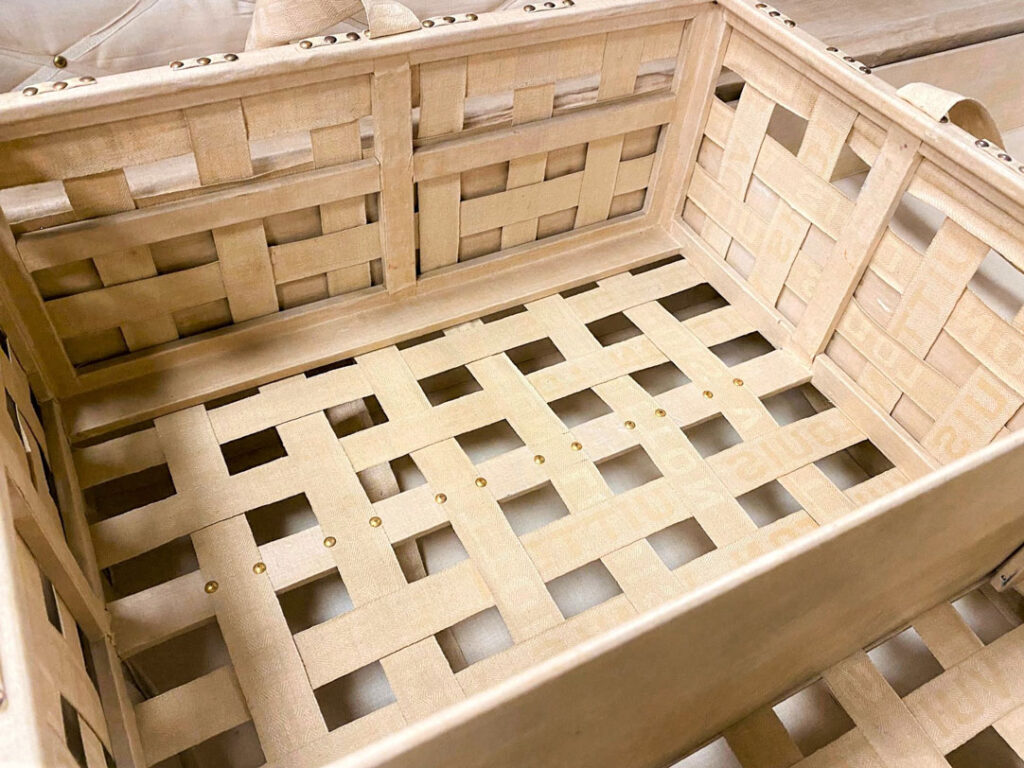
The woven tray above was originally used to store hats and veils. Note the attention to detail in the design, featuring the repetitive “Louis Vuitton” woven throughout the linen strapping. The original structural brass tacks were strategically placed to also serve as a decorative element.
A coat of microcrystalline wax was applied to the exterior elements to provide additional protection to the preserved surfaces. Given the family history of the trunk, care was taken to honor the historic wear that was present throughout. The wear on the hardware and edges of the trunk are all evidence of the piece’s passage through time.

Detail of the branded trunk nailhead, wood trim, and monogram stenciled cover after treatment.

Original Louis Vuitton latch and lock. Vuitton’s locks were considered burglar-proof and top of the line at the time. Note the “Louis Vuitton” detail on the brass rivets.
The trunk’s handmade construction and caliber were always apparent throughout the treatment. The resilience of this trunk highlights the importance of design, integrity, and high-quality materials. Even over a century later, Louis Vuitton’s dedication to the durability and utility of his product is honored by the successful treatment and continued legacy of this heirloom trunk.
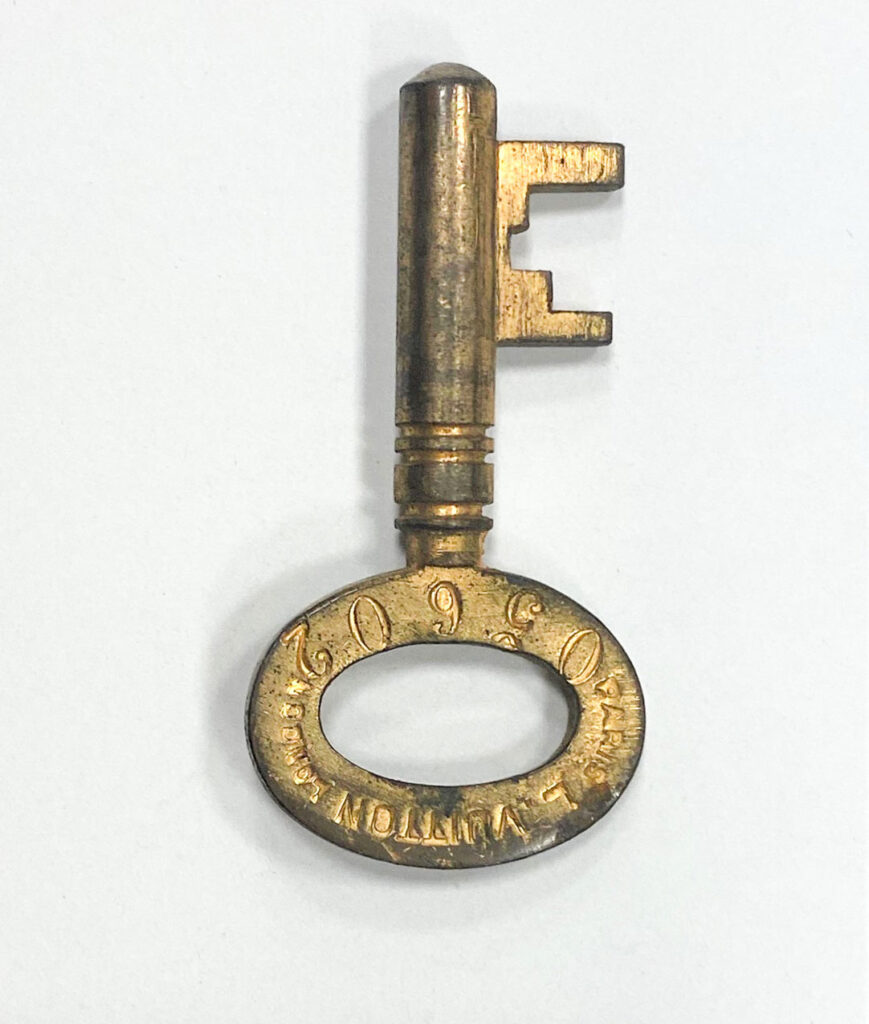
Original Louis Vuitton trunk key found inside one of the interior compartments.
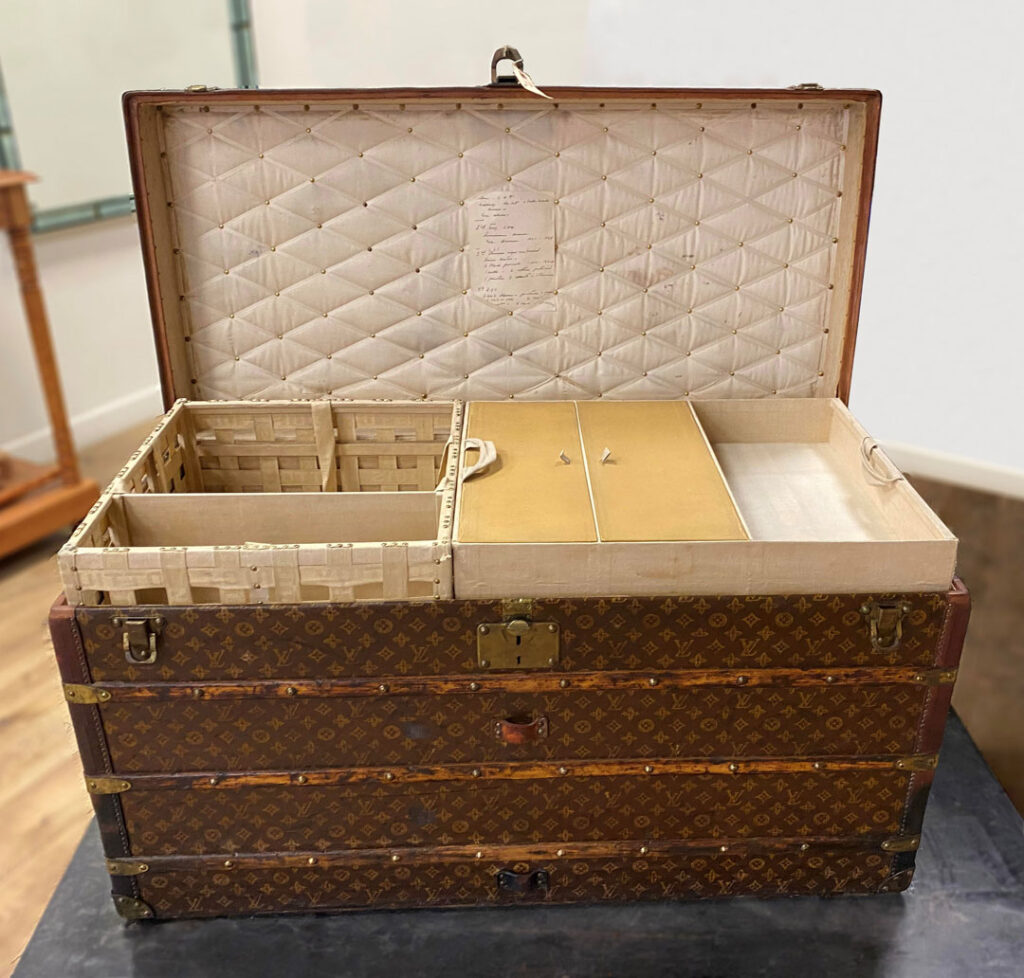
After treatment of the treated trunk. The interior tray featured at the top on the right side is compartmentalized to hold accessories from the day such as gloves, handkerchiefs, ribbons, fans, etc. A series of buttons, hat pin, ribbons, and two keys were found inside prior to treatment.
